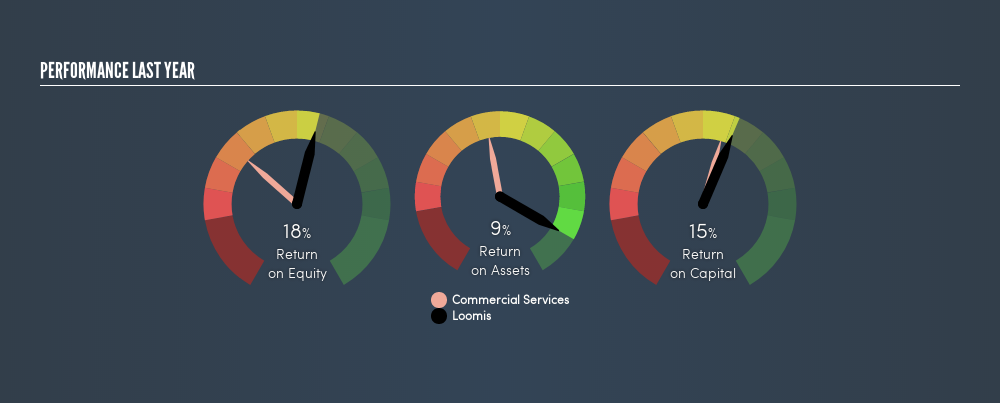
Today we'll evaluate Loomis AB (publ) (STO:LOOM B) to determine whether it could have potential as an investment idea. In particular, we'll consider its Return On Capital Employed (ROCE), as that can give us insight into how profitably the company is able to employ capital in its business.
First up, we'll look at what ROCE is and how we calculate it. Then we'll compare its ROCE to similar companies. And finally, we'll look at how its current liabilities are impacting its ROCE.
Return On Capital Employed (ROCE): What is it?
ROCE measures the 'return' (pre-tax profit) a company generates from capital employed in its business. In general, businesses with a higher ROCE are usually better quality. Ultimately, it is a useful but imperfect metric. Author Edwin Whiting says to be careful when comparing the ROCE of different businesses, since 'No two businesses are exactly alike.'
So, How Do We Calculate ROCE?
Analysts use this formula to calculate return on capital employed:
Return on Capital Employed = Earnings Before Interest and Tax (EBIT) ÷ (Total Assets - Current Liabilities)
Or for Loomis:
0.15 = kr2.1b ÷ (kr18b - kr4.2b) (Based on the trailing twelve months to December 2018.)
Therefore, Loomis has an ROCE of 15%.
See our latest analysis for Loomis
Does Loomis Have A Good ROCE?
ROCE can be useful when making comparisons, such as between similar companies. Loomis's ROCE appears to be substantially greater than the 7.9% average in the Commercial Services industry. I think that's good to see, since it implies the company is better than other companies at making the most of its capital. Regardless of where Loomis sits next to its industry, its ROCE in absolute terms appears satisfactory, and this company could be worth a closer look.

Remember that this metric is backwards looking - it shows what has happened in the past, and does not accurately predict the future. Companies in cyclical industries can be difficult to understand using ROCE, as returns typically look high during boom times, and low during busts. ROCE is only a point-in-time measure. Future performance is what matters, and you can see analyst predictions in our freereport on analyst forecasts for the company.
Loomis's Current Liabilities And Their Impact On Its ROCE
Current liabilities are short term bills and invoices that need to be paid in 12 months or less. Due to the way the ROCE equation works, having large bills due in the near term can make it look as though a company has less capital employed, and thus a higher ROCE than usual. To counteract this, we check if a company has high current liabilities, relative to its total assets.
Loomis has total liabilities of kr4.2b and total assets of kr18b. Therefore its current liabilities are equivalent to approximately 23% of its total assets. A fairly low level of current liabilities is not influencing the ROCE too much.
The Bottom Line On Loomis's ROCE
Overall, Loomis has a decent ROCE and could be worthy of further research. But note: Loomis may not be the best stock to buy. So take a peek at this freelist of interesting companies with strong recent earnings growth (and a P/E ratio below 20).
If you are like me, then you will not want to miss this freelist of growing companies that insiders are buying.
We aim to bring you long-term focused research analysis driven by fundamental data. Note that our analysis may not factor in the latest price-sensitive company announcements or qualitative material.
If you spot an error that warrants correction, please contact the editor at editorial-team@simplywallst.com. This article by Simply Wall St is general in nature. It does not constitute a recommendation to buy or sell any stock, and does not take account of your objectives, or your financial situation. Simply Wall St has no position in the stocks mentioned. Thank you for reading.
About OM:LOOMIS
Loomis
Provides secure payment solutions in the United States, France, Switzerland, Spain, the United Kingdom, Sweden, and internationally.
Flawless balance sheet, undervalued and pays a dividend.
Similar Companies
Market Insights
Community Narratives





